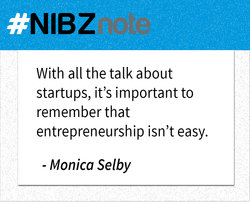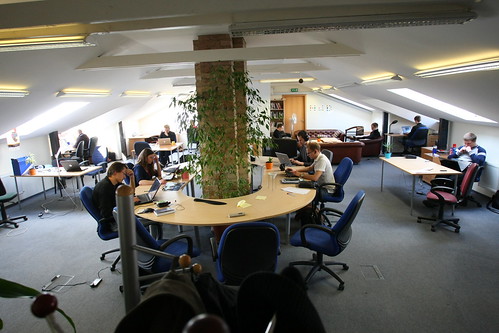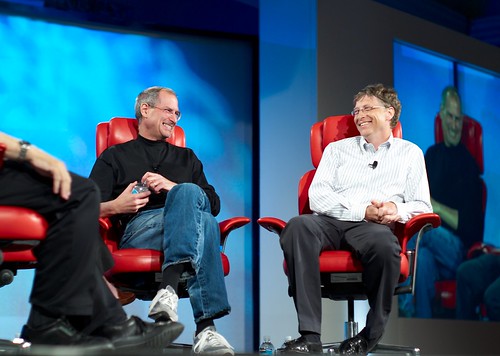
Love ’em or hate ’em, accelerators are popping up all over the country. The best ones offer mentorship, business development, and access to connections founders just wouldn’t have on their own.
But, getting into an accelerator can often be difficult. The process is simple enough, but what is it that really puts a team above the competition? What are accelerators looking for when they sift through all the applications for their newest cohorts?
Well, wonder no more! We asked some of the top accelerators everywhere else for their #1 tip for standing out in the crowd. Check out what they have to say:
 TechStars Austin
TechStars Austin
Be concise in your application and communication. Toil over every word, the more you can remove the better, but also realize that buzz words contain zero information content. Don’t try to be impressive, just try to be understandable and you’ll stand out.
Jason Seats, Managing Director, @seats
Start Co, Memphis

We look for diverse, fierce, coachable, and execution oriented teams first and foremost . . . that is 95% of our selection process. And it should be a team. While we have taken a couple in the past, being a solo founder is a negative selection criteria.
Eric Mathews, Co-founder, @ecmathews
 Velocity Indiana, Inc
Velocity Indiana, Inc
The tongue and cheek is Cash. And to make sure you follow the instructions. The real answer would be to make sure you express passionate enthusiasm for your idea.
Tony Schy, Managing Director, @tschy
Gigtank, Chattanooga, TN
“Convince us that you’ll be able to close sales or establish pilot projects during GIGTANK with customers in a rapidly growing market.”
Mike Bradshaw, Executive Director, @MikeBinChatt
 TechStars, Boulder
TechStars, Boulder
Be different so you get noticed!
Nicole Glaros, Managing Director, @nglaros
AlphaLab, Pittsburgh
Be focused and specific. Don’t talk in generalities or use a lot of buzzwords or catch phrases. Be specific about the market problem you’re solving (and tell it from the customer point of view). Be specific in describing your solution (or proposed solution) and why it’s truly unique. Be focused in describing how you’ll acquire customers and market your product. But don’t mistake “specific” to mean “lots and lots of detail” – clarity and focus are still critical.
Jim Jen, Executive Director, @jimcjen
 Amplify.la
Amplify.la
“Think big and solve a problem that’s worth solving and wear your passion on your sleeve.”
Paul Bricault, Co-founder, @pbricault
Jumpstart Foundry, Nashville
“I suggest that candidates network their way through our mentors. They are all naturally predisposed to root for startup founders and are clearly listed on the JSF website. If you can’t sell them on your concept then you will have an even harder time with real customers.”
Vic Gatto, Founder & CEO, @Vic_Gatto

UpTech, Cincinnati
My advice… have a sincere passion for what you are doing. Not only will your passion get investors excited about your idea but it will get you through the gut wrenching moments of being an entrepreneur.
Amanda Greenwell, Program Manager, @GlamHippie
Launchpad LA
Get a strong referral from a founder we’ve already funded.
Sam Teller, Managing Director, @samteller
 NMotion, Lincoln
NMotion, Lincoln
Demonstrate your passion for the problem you’re trying to solve and show us that you’re the team that can solve it. At NMotion we’re looking for teams that know why you’re applying to an accelerator beyond capital. Teams that demonstrate an ability to work hard, experiment, and take advantage of the connections, community, and curriculum an accelerator brings usually rank high on our list.
Brian Ardinger, Managing Director, @ardinger
VentureSpur, Oklahoma City
If you want to give yourself the best chance of acceptance, spend some time reviewing the program and mentors on our website, including our focus areas and blog – and have a coherent reason why your startup needs to leverage our accelerator to grow quickly and how you’d make effective use of the resources provided. Startup teams that do this put themselves ahead of the pack!
Kraettli Lawrence Epperson, Managing Director & Co-founder, @klepperson
 TechStars Boston
TechStars Boston
Demonstrate you have a team that can learn quickly and cares.
Katie Rae, Managing Director, @ktrae
FlashStarts, Cleveland
Demonstrate the ability to iterate rapidly. Our application process is iterative. Apply and we will provide feedback. Respond and we will provide more feedback. On day in May we will cut a $25,000 check and accept you into our Summer Program. Continue the process throughout the summer and we might cut a $250,000 check (follow-on funding amounts vary. In 2013 the amount ranged form $0 to $300,000).
Charles Stack, Founder/CEO, @cstack
 LaunchHouse, Cleveland
LaunchHouse, Cleveland
The number 1 tip for being accepted into LaunchHouse Accelerator is having industry expertise, consistent customer development, and the team to execute.
Todd Goldstein, CEO, @ToddGoldstein
Straight Shot, Omaha
The most important thing to be able to demonstrate is how the founding team is uniquely qualified to solve the problem their business aims to address. Being able to connect a founding team’s personal and professional experiences with the market that’s being pursues is a great indicator of the ability to execute and generate the momentum necessary to quickly grow and scale.
David Arnold, Managing Director, @David_M_Arnold
 TechStars Chicago
TechStars Chicago
Pro Tip to help you get into Techstars Chicago: Be able to demonstrate an ability to execute and iterate a ton in a short amount of time. We love teams that are smart, open minded, coachable and can out execute the competition. Submit your application early, add updates as you make progress and gain learnings and execute, execute, execute!!
Troy Henikoff, Managing Director, @TroyHenikoff
SeedSumo, College Station
Prove you move quickly – if your team is strong and concept is solid, the last thing we look for is movement. Are you testing things already? Prove it to us. The ball should already be rolling…fast.
Bryan Bulte, Managing Director, @bultebryan
 SURGE, Houston
SURGE, Houston
My #1 tip for entrepreneurs: Clear demonstration of commitment. SURGE’s entire business model is designed so that everyone – investors, mentors, sponsors – is aligned with the same goals as our entrepreneurs. We are 100% committed to entrepreneurs and they come first in everything that we do. We believe in entrepreneurs having skin in the game. We do. We are the largest investors in SURGE and our entrepreneurs. We expect our founders to reciprocate and be 100% focused on the business they are pitching to us. If they are not, we know that customers will not buy. Investors will not invest. Thus, breaking our entire model. We don’t want part-time or hobbyist entrepreneurs. We want the real deal.
Kirk Coburn, Founder/Managing Director, @kirkcoburn
Impact Engine, Chicago
Passionate entrepreneurs that are ACTION oriented.
Chuck Templeton, Managing Director, @ctemp
 Healthbox, Boston
Healthbox, Boston
“Be candid about your areas for improvement – we are here to help, mentor, build, guide and connect!”
Ateet Adhikari, @health_box
Dreamit Ventures, Austin
I’d say to include a video pitch (not a 20-min demo recorded at another event, but a quick elevator pitch about the company and a bit about each team member). Doesn’t require high production value – phone is fine. Better to see team members talking than one of those cartoons with an automated voice reading a script. It’s not the most important thing (obviously the fundamentals of the team/business matter most) – but it’s unique and effective,
Kerry Rupp, CEO, @kerry_rupp
 gener8tor, Madison, WI
gener8tor, Madison, WI
Demonstrate traction. The marketplace doesn’t lie—tell us about your customers, users and revenue.
Troy Vosseller, Co-founder, @troyvosseller











































